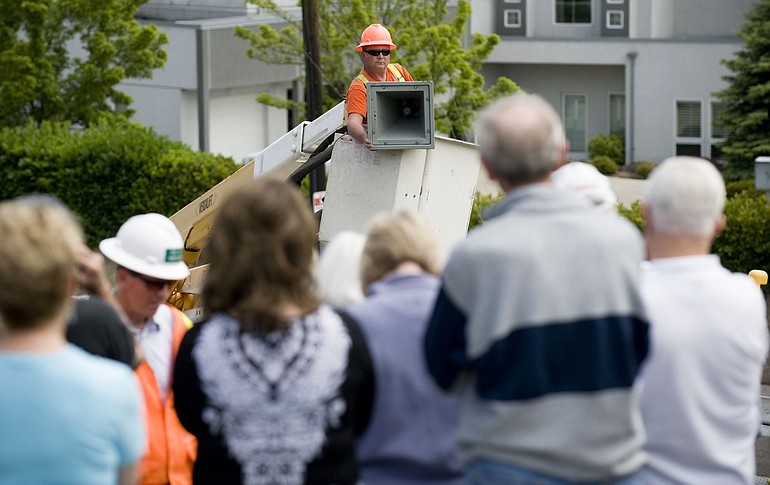Someday, city officials -- and probably plenty of residents -- hope to transform the entire city into a train horn quiet zone.
In some areas, that will involve putting in special crossing gates with the help of a local improvement district, or LID, where neighbors agree to pay for the costs. In other spots, the road may be rerouted or closed. In still others, more simple improvements, like high median dividers, may be enough to silence the blasts.
Here's a breakdown of the intersections that need work:
Downtown:
o Hill Street: As part of city's planned projects to improve access to the waterfront, the tracks here will be realigned and crossing improvements, including noise-reducing wayside horns, may be used, if surrounding businesses choose to pay for them.
o Eighth Street: The street is set to be closed at the tracks with waterfront improvements. Traffic will be rerouted underneath the railroad berm on Seventh Street, and no horn will be needed.
o 11th Street: The crossing is being upgraded; wayside horns were tested here Friday. Surrounding businesses would have to pay to have them installed with the gates.
Central Vancouver:
o Beach Drive: Median improvements have been done; final paperwork is expected to go to the Federal Railroad Administration soon.
o Chelsea Avenue/Topper Drive: Wayside horns are being tested at this private crossing; it is still under study.
East Vancouver:
o Southeast 144th Avenue: The city is in negotiations with the railroad administration here. The city contends it is a private crossing and no safety modifications need to be done, while the federal agency says that some work must be done.
o Southeast 139th, 147th and 164th avenues: Residents there are looking at officially forming a local transportation improvement district to spread the $1.2 million cost of three four-arm crossing guards across 469 households. The project is on hold until the city figures out what may have to be done at the crossing on 144th. The Vancouver City Council will have the final say on forming the district.



